6.1 Äpfel mit Birnen vergleichen

Guten Tag!
Zum Aufwärmen machen wir unseren Tagesminiplausch und eine Wiederholung.
Wiederholung
In the previous lesson, you learned how to say the activities that you want to do. Let’s review what you have learned.
Was willst du heute machen? Was willst du Samstag machen? Answer the questions in your written journal, stating what you want to do. Then record your answers in your audio journal.
Lektionsüberblick
In German, you don’t compare apples to oranges but instead you could Äpfel mit Birnen vergleichen (compare apples with pears)! In this first Mahlzeit! and Prost! lesson, you will be introduced to a large variety of fruits (Obst) typically consumed in the US , which are organized into two groups: cognates and not cognates, to reduce the confusion between Äpfel and Birnen. In the end, you will be able to 1) recognize words for fruits among other food words, 2) name at least two fruits that you like to eat, and 3) name at least one fruit that you do not eat.
1) Äpfeln, Birnen und anderes Obst
As you begin to learn the names of different types of fruit, you will notice many words share similarities with their English counterparts. Read and listen to the fruits in the presentation below. Be sure to click through to each slide. The plural forms of each fruit are shown because we will need the plural form to discuss our preferences today (think: I like apples).
🎥 You can watch this Easy German video to listen to Germans talk about their Lieblingsobst.
Jetzt bist du dran!
2) Ich esse gern…
Read and listen to the comic below, paying special attention to the question being asked. Can you tell what information is being requested by the answer given?
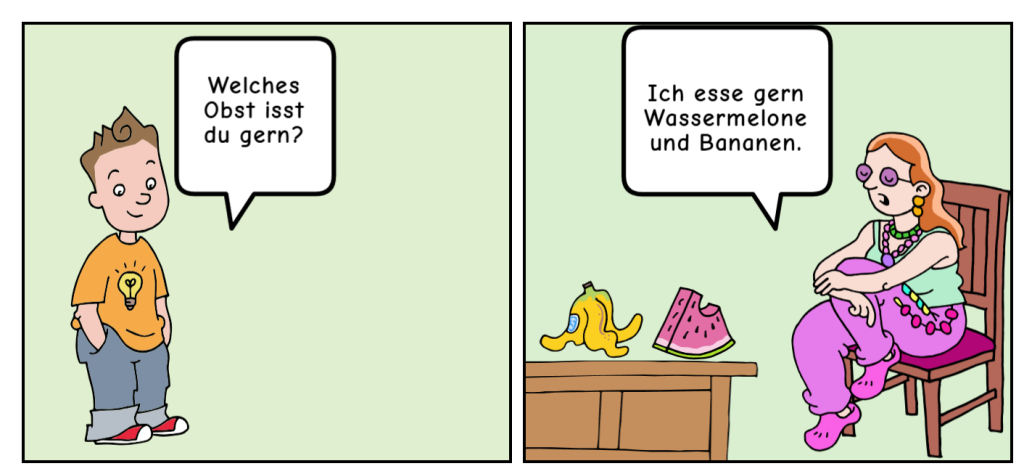 |
Let’s practice.
Jetzt bist du dran!
3) Ich esse keine…
Recall the little word kein and what it means in a sentence. Take a look at the comic below to get a hint if you can’t remember.
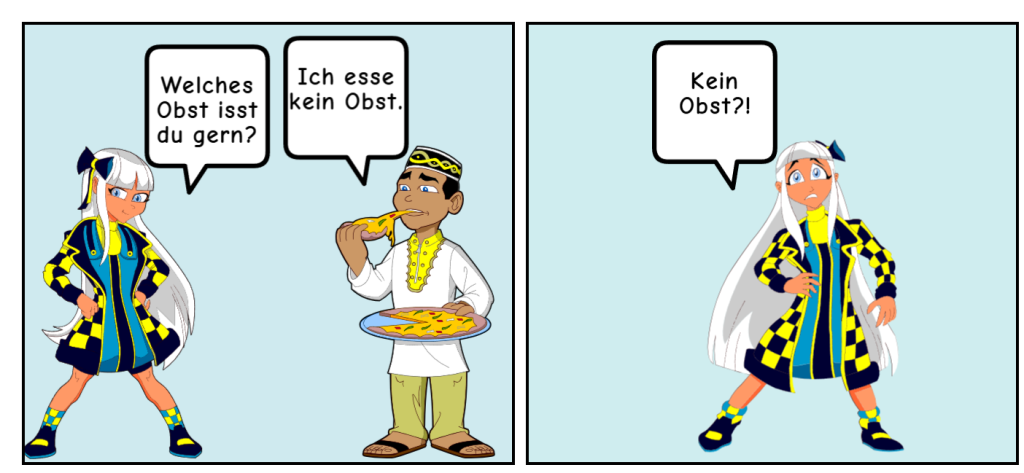 |
Here are some other examples:
Ich esse keine Birnen. Ich esse keine Bananen. |
Hast du Allergien? Do you have allergies? Here is how to express that if so:
Ich esse keine Erdbeeren. Ich habe eine Allergie gegen Erdbeeren.
Let’s practice.
Kleiner Hinweis
|
Ich esse nur* koscher. Ich esse nur halal. Ich esse nur vegetarisch. |
*nur = only
Jetzt bist du dran!
Zum Schluß
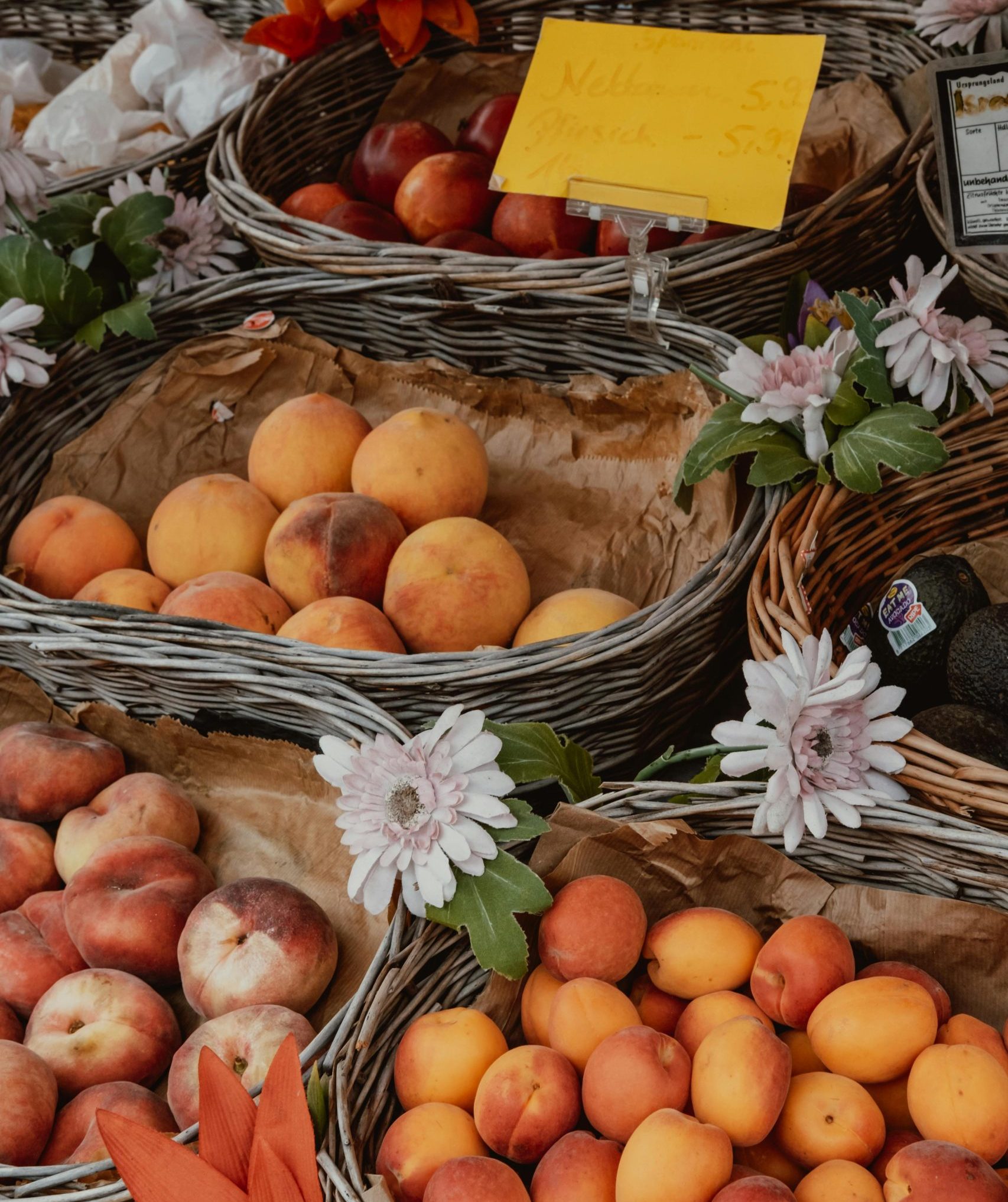 |
 |
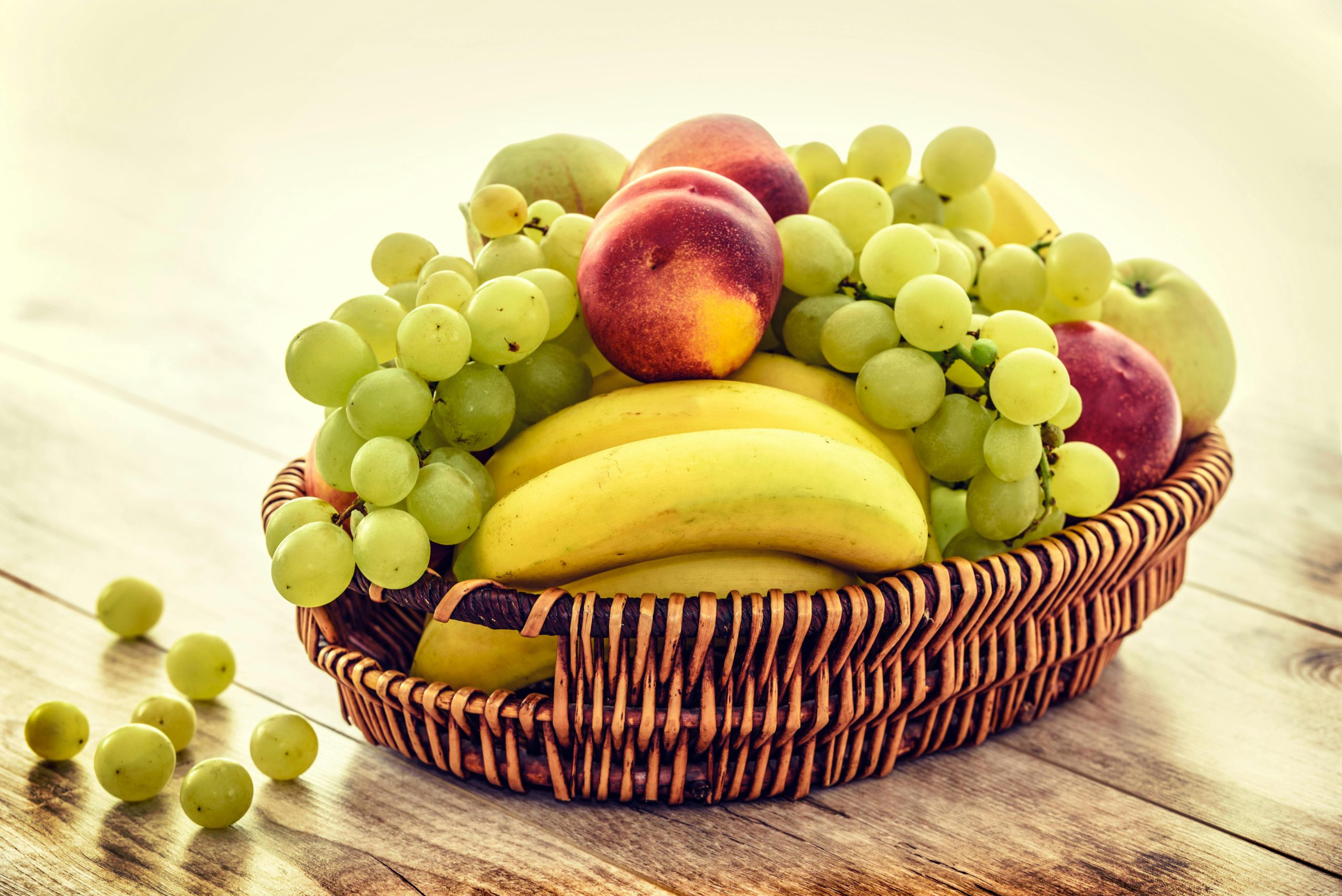 |
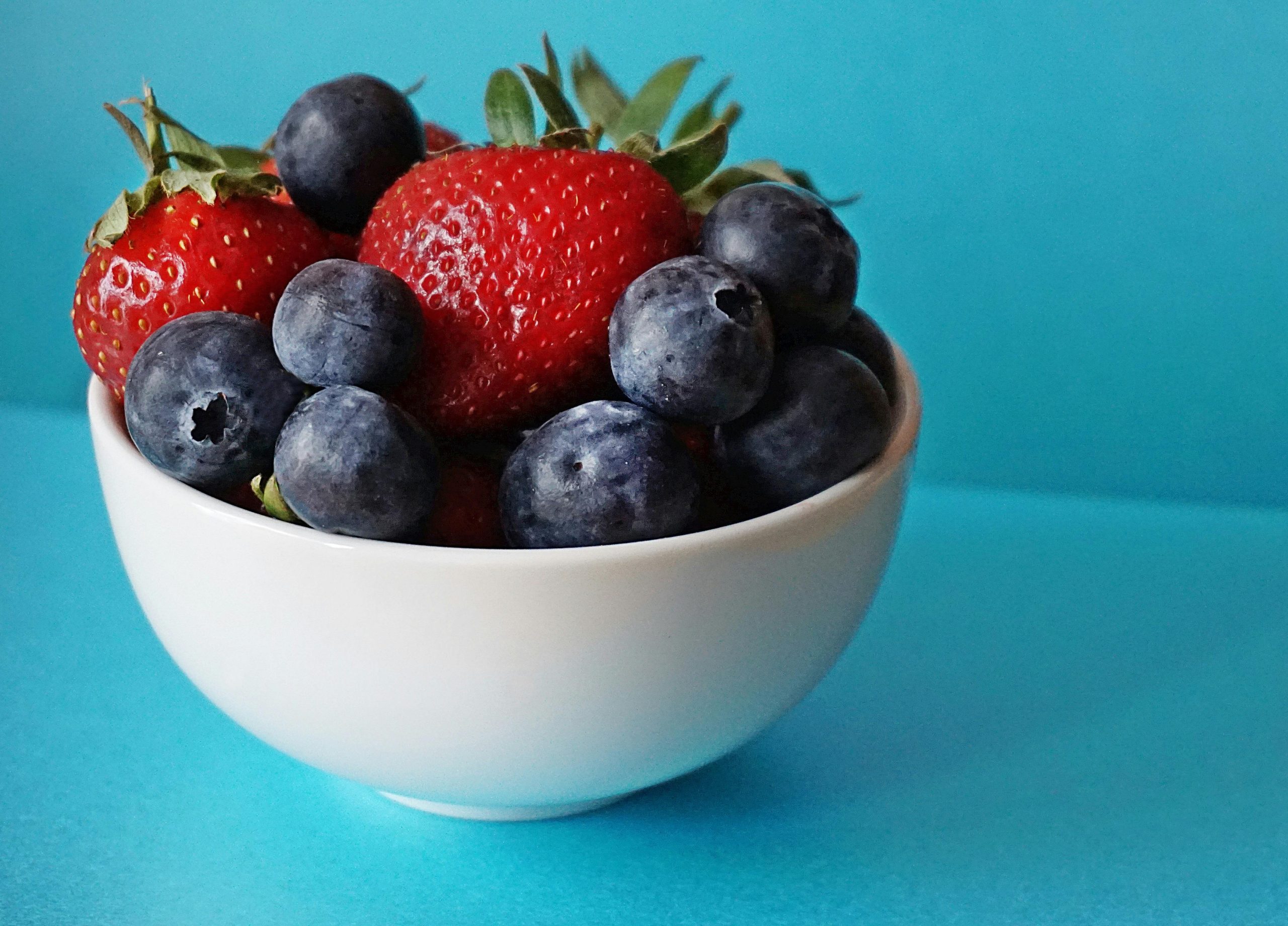 |

*As you conclude this lesson, don’t forget to check Canvas!*

Before you go, check out this brief slide show from Deutsche Welle with idiomatic expressions featuring fruit.
Here is a large collection of idiomatic expressions featuring fruit with German explanations.
Media Attributions
- 1010-1020 banner long large reduced
- Comic made at www.MakeBeliefsComix.com
- make-beliefs-comix (25)
- Photo of fruit stand by pexels-maide-arslan-128712163-27611610
- Photo of fruit hat by pexels-rdne-8540248
- Photo of fruit basket by pexels-asphotograpy-235294
- Photo of fruit bowl by pexels-suzyhazelwood-1120575
- Private: confidence scale_large horizontal_updated

